
The Great Embassy Historical and Cultural Center is a museum located in the King's Gates of Kaliningrad.
The King's Gate (German name Königstor) is one of the seven surviving city gates of Konigsberg (now Kaliningrad).
Currently, the King's Gate is an architectural monument of the 19th century, an object of cultural heritage of federal significance and a symbol of international cooperation. This is one of the most interesting fortifications of the former Konigsberg, now located in the center of Kaliningrad and more like a small castle. Learn more about the King's Gate in Kaliningrad...

The Royal Gate Museum (the Great Embassy Historical and Cultural Center) is small, consists of three halls: the main one - the central one and two smaller ones - the side ones.
The museum has expositions dedicated to the emergence and development of Konigsberg, visits to Konigsberg by outstanding people, the history of diplomatic Konigsberg - Kaliningrad. Also in the museum there is a famous Prussian cat that fulfills wishes, for which many tourists come to this museum. Even in the museum, you can try on medieval costumes and arrange a mini-photo shoot in unusual outfits. But, about everything in order
Entering the walls of the Royal Gate, we get into the first hall.
The exhibition "Pharmacy of the Three Kings" is presented in the hall, introducing guests to the history of pharmacies in Konigsberg of three time periods: in the order state, in the duchy and in the kingdom.
There is also a souvenir shop and you can buy tickets to the museum.
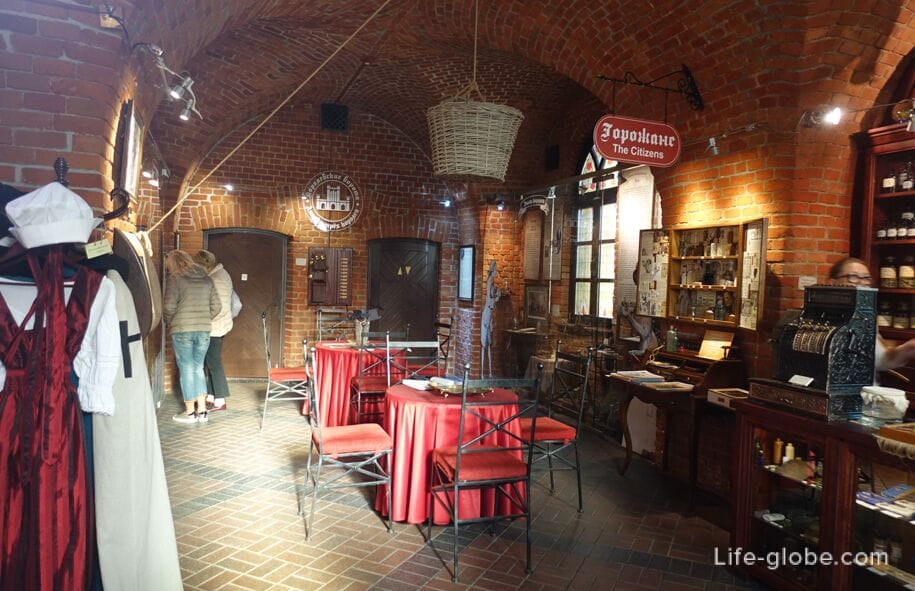
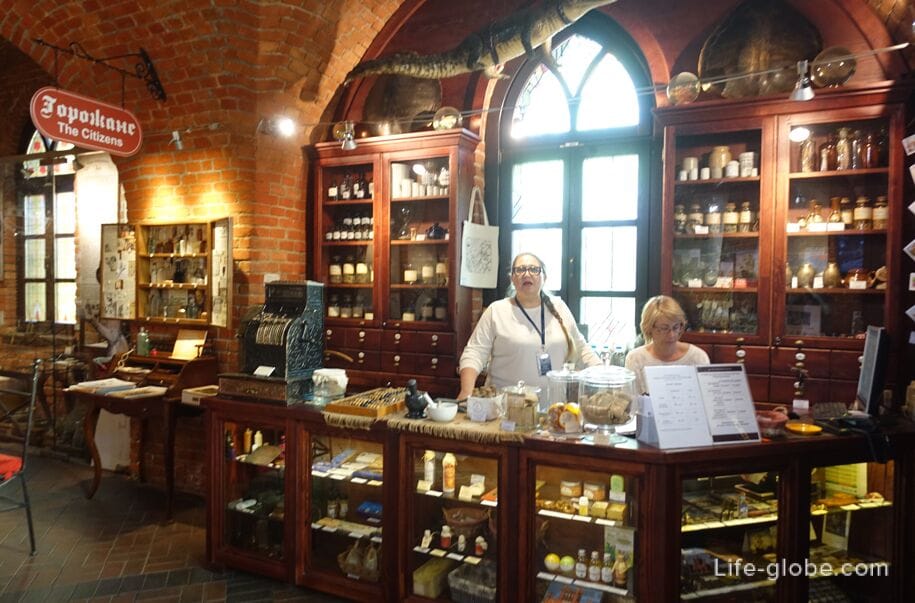
The pharmacy occupies a special place in the history and culture of old Konigsberg. It is not only an architectural object. Along with the castle, the market, the square, the pharmacy with its architecture, interior, symbols and traditions acted as the most important of the spaces of the organization of urban life and was a component of the cultural image of the city.
Fragments of the historical and cultural reconstruction of the pharmacy at the exhibition "Royal Pharmacy" in the Royal Gate are represented by four complexes: a pharmacy - warehouse of the era of knights, a pharmacy - laboratory of an alchemist of the time of the duchy, a pharmacy - laboratory of a scientist in the era of kings and a pharmacy - house of beauty and health.
In Prussia, in the lands of the Teutonic Order, the first pharmacies appeared in the 18th century. They appeared in accordance with the idea of the knightly brotherhood - to help the sick. In addition, the order was interested in streamlining the sanitary service. The knights supplied pharmacies with material and themselves bred medicinal plants in their gardens.
In the monastic pharmacies of medieval Europe, medicines and cosmetics were created. The plants used in this process were often called the names of Old and New Testament saints: the rose of St. Mary, the herb of St. Christ, the eye of Christ, the herb of St. John, etc. The monks prepared medicines and released them free of charge to those in need, starting their recipes with the words: "With God!" ("Cum Deo!").
In monasteries, handwritten books were compiled, which were collections of descriptions of medicinal plants and preparations. The manuscripts described in detail the methods of collecting and growing plants, methods of their processing and recommendations for use. These records have become valuable sources of knowledge and experience that have come down to our time.
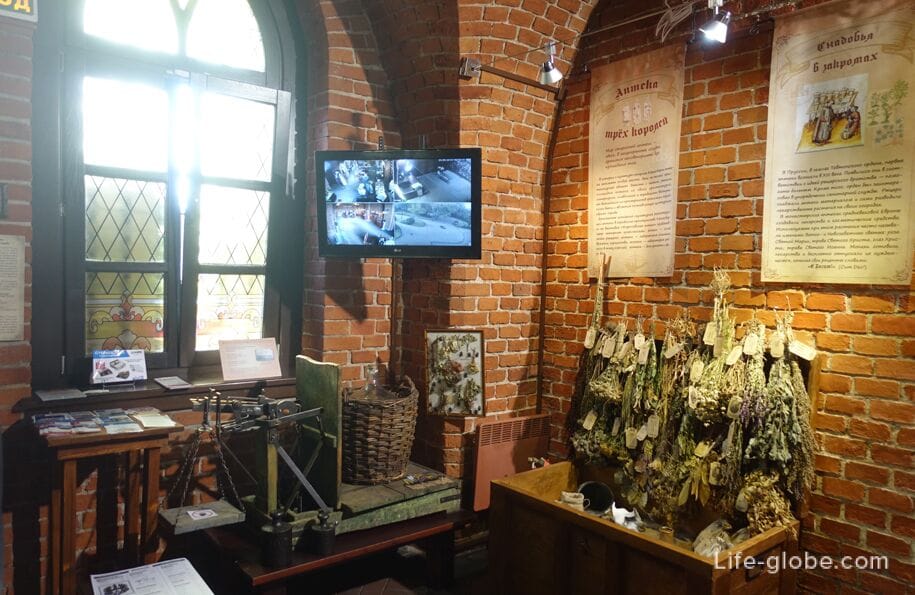
Interestingly, at that time, in addition to herbs and other ingredients, stones were also part of the prepared medicines.
The drugs were stored in clay, stone and wooden containers with lids.
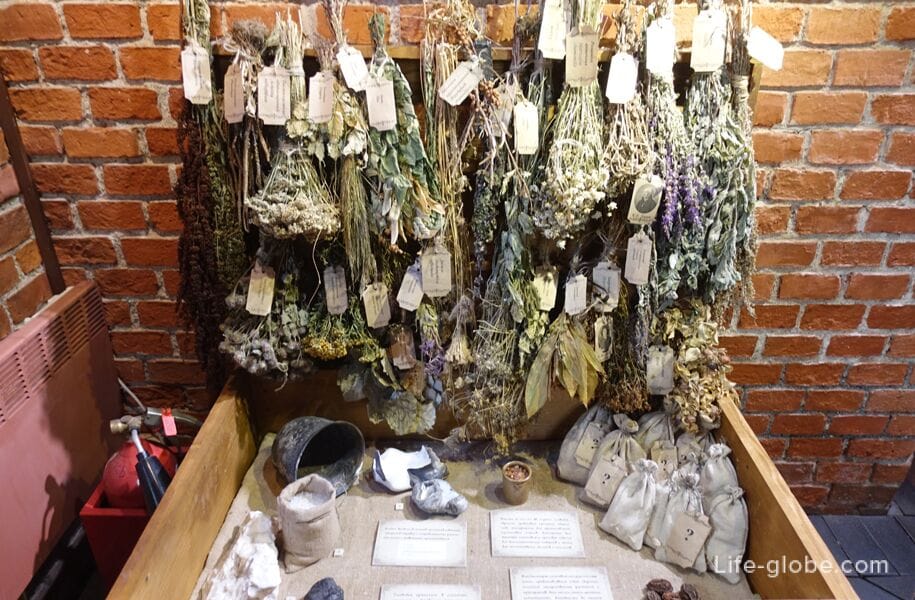
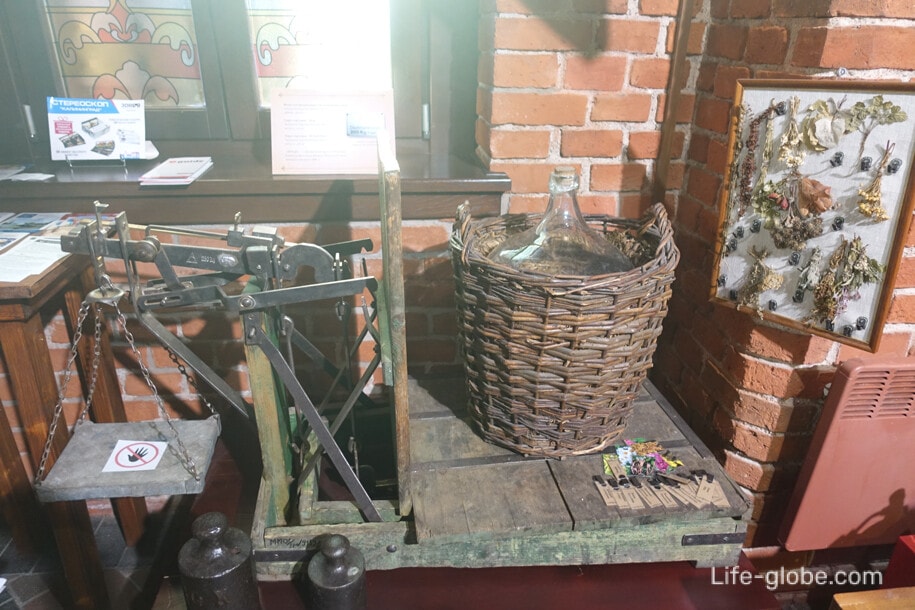
Since the 16th century, individual European pharmacies have become centers not only for the manufacture of medicines, but also for their development. New forms and prescriptions of new medicines are emerging, the prescription tradition is being legislated, and measures are being taken to streamline pharmaceutical activities.
New trends were reflected in the pharmacy business in Prussia. This was the reign of Albrecht of Brandenburg-Ansbach (1490-1568), the last grand master of the Teutonic Order, the first Duke of Prussia, reformer and public figure. Having started fundamental transformations in the economic, political and religious spheres, Albrecht did not ignore medicine and pharmacy. During his reign, Konigsberg experienced the epidemic of the English sweating fever of 1525 and the terrible plague epidemic of 1549. The search for rare and unknown medicines, considered as a political task, has become particularly relevant. The reform of pharmacy in Prussia has become an important part of state policy. At that time, pharmacists and doctors were respected personalities, taught at the university and participated in the field of municipal public administration.
In the history of Konigsberg, outbreaks of plague were recorded in 1525, 1531, 1537, 1539, 1546 and 1549. Almost every three to five years, the "Black Death" came with another visit, leaving behind suffering and horror, the consequences of which affected all spheres of life and culture, including religion and art.
During epidemics, juniper and oak firewood were burned in the streets and markets, in churches and dwellings, in the fire of which skins, hair, feathers were destroyed. Money and other items were treated with vinegar.

At that time, ingredients of plant and animal origin (herbs, fruits of tropical plants, corals, shells of marine mollusks, spiders, snakes, crocodiles, worms, mice and other insects, animals and waterfowl) were actively used in the preparation of medicines.
A special place was given to "odorous medicines" - spices. In the Middle Ages, spices were identified with gold and jewelry. For merchants and the state treasury, they were a strategic commodity. Since ancient times, the taste and medicinal qualities of spices have been known and appreciated: they contain a large amount of substances useful for the body; they create a unique taste and aroma of dishes; they are natural fighters against microbes.
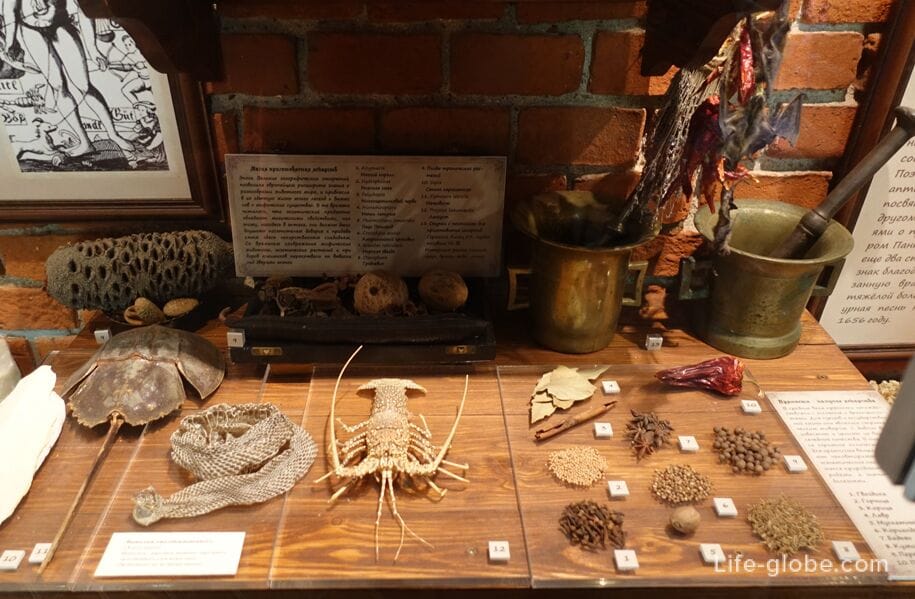
The shells of marine mollusks most often served as talismans. It was believed that the use of calcite, which makes up the inner shell of shells, improves cardiac activity, helps in the treatment of lung diseases, and pearls and mother-of-pearl are able to cure all diseases. Drugstore visitors, succumbing to the magical power of shells, selflessly believed in their speedy recovery from the purchased medicine.
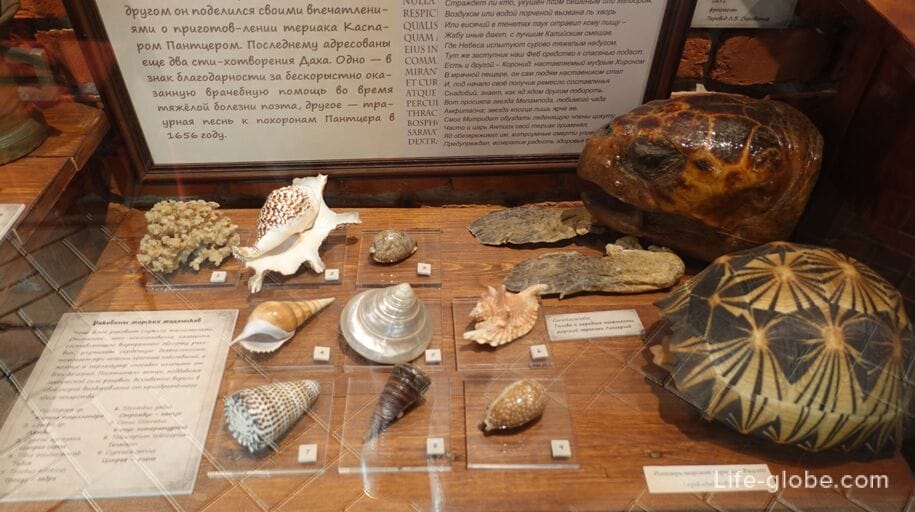
The history of mankind's ideas about the properties of precious stones changed along with its ideas about the structure of the world. In the Middle Ages, it was believed that stones were able to connect the unknown world of the universe with the unknown world of the human soul and body. Each gemstone was directly subordinate to one of the celestial bodies and, receiving cosmic energy from it, could influence a particular person, healing his body or helping in business.

In addition, the era of Great Geographical Discoveries, in addition to expanding knowledge about the diversity of the animal world, brought many legends and fictions about mythical creatures living on our planet into ordinary life. At that time, it was believed that exotic items had magical properties, therefore, being in a pharmacy, they had to inspire visitors with confidence in the medicinal drugs sold. Over time, images of exotic and mythical animals, plants and incomprehensible devices of alchemists migrated to the signs above the doors of pharmacies and became special decorations in the interior of pharmacy shops.

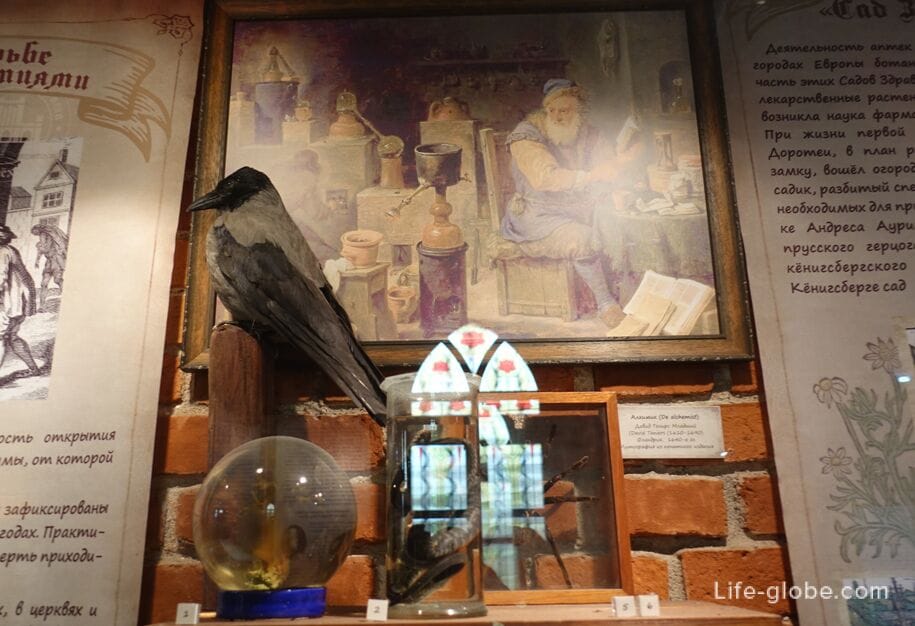
Another interesting exhibit of this part of the museum hall in the Royal Gate is the "Amulet against Drunkenness", which was found during the archaeological excavations of the Royal Castle. According to legend, this amulet belonged to the first Prussian Duke Albrecht of Brandenburg. When his spirit was broken by the absence of an heir, the duke suffered from alcoholism, then the court sorcerer Pauls Skalich made this amulet and, according to legend, it was this pendant that helped the duke get rid of addiction.
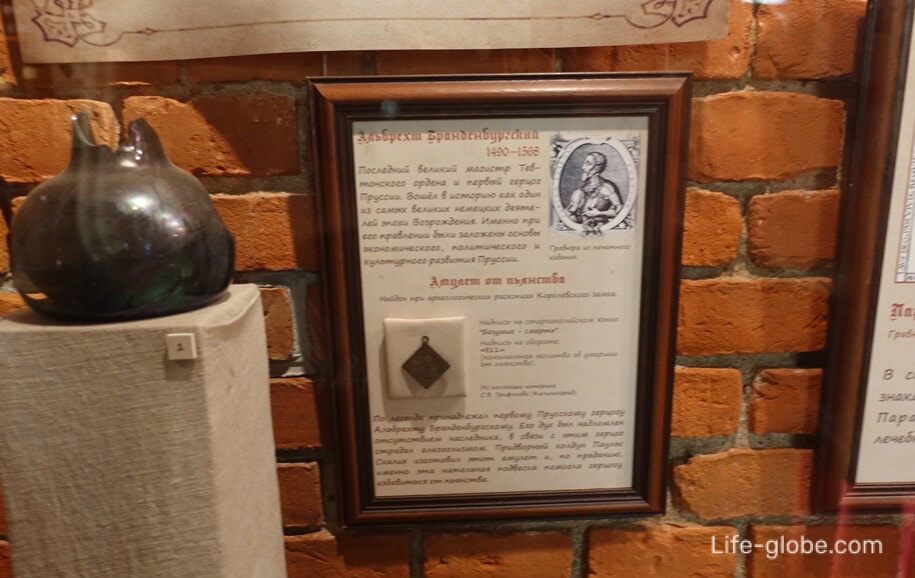
From the first half of the 18th century to the first half of the 19th century, the time when pharmacy is developing rapidly is considered the golden age of pharmacy.
Pharmacies are increasingly focused on the results of scientific research, and pharmacists are not only developing new drugs, but also declaring themselves as scientists in the field of chemistry, physics and botany.
Pharmacy laboratories receive orders for the manufacture of chemicals for the needs of industry. These are dyes, varnishes, components of cosmetics and food products. Wholesale trade is becoming more active. So, in 1768, an additional regulation was created on what grocers could sell and what only pharmacists could sell. Pharmacies are tightly integrated into the general structure of medical care, together with the Academy and hospitals.
The origin of scientific pharmacy in Prussia took place in Konigsberg, in the court pharmacy of Karl Gottfried Hagen, who did not allow chemistry and pharmacy to be turned into only a certain appendage of the medical faculty. He sought to combine the scientific theory of pharmacy with the traditional art of pharmacy.
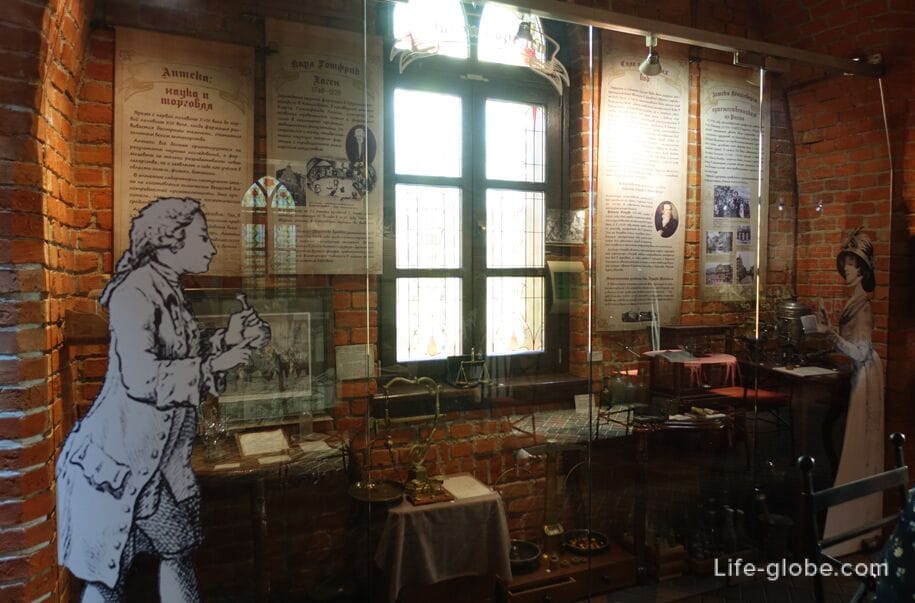
Laboratory chemical tableware, dissertation theses by Karl Gottfriedhagen and a pharmacy bottle (glass, the first half of the 20th century, Germany).

Pharmacy office, dosage forms and bottles for mineral water.

People have been worried about the accuracy of the scales since the earliest times. It is not for nothing that the Bible says: "The wrong scales are an abomination before the Lord, but the right weight is pleasing to him" (The Bible. The Book of Proverbs of Solomon. 16:11).
Pharmacy scales had to be extremely accurate, since a person's life depended on the dosage of drugs. The first verifiers of the scales were the clergy, and the first samples of the scales were kept in monasteries and churches.
In the middle of the 18th century, trade, pharmaceuticals and manufacturing began to develop by leaps and bounds. At the end of the 18th century, factories appeared, producing specialized various scales in batches and to order. There were pharmacy, trade, analytical, postal, rocker scales with weights.

Since the end of the 19th century, amber has been widely used as a material with disinfecting properties for the manufacture of smoking accessories and medical utensils. And the miraculous power of amber was continued in amulets, talismans and jewelry. You can learn more about amber at the Kaliningrad Amber Museum.
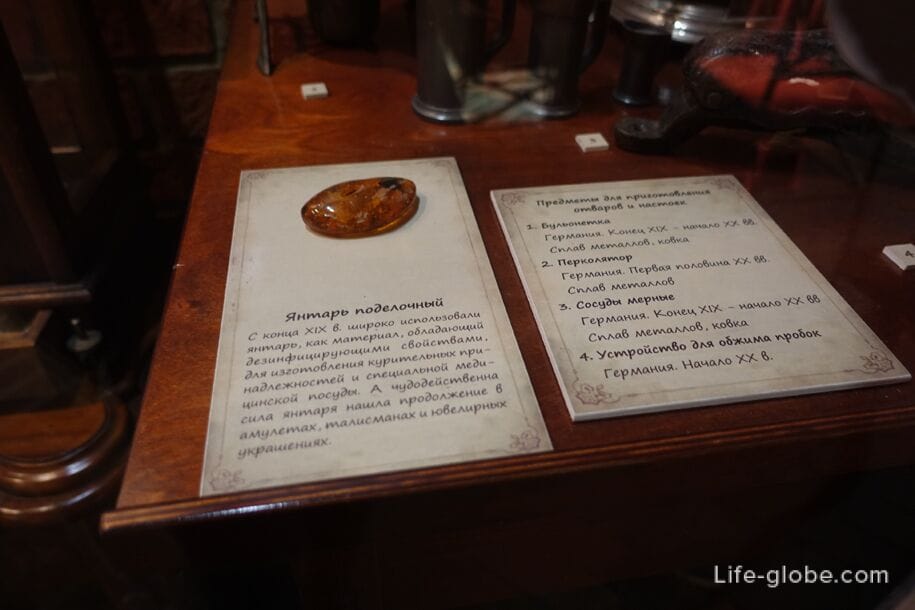
In the last quarter of the 19th - early 20th centuries, the pharmaceutical market experienced rapid growth. First of all, the boom of chemical discoveries contributed to this. Pharmaceutical, perfumery and food industries began to develop.
Scientists have learned how to create artificial mixtures that, on the one hand, more or less accurately imitated natural floral scents, and on the other - created aromas not found in nature.
Many well-known companies were formed from pharmacy laboratories and kept secret the composition and preparation of their patented products. The share of over-the-counter medicines has increased, the range of hygiene products has significantly expanded and changed, and pharmacies have begun to turn into trading establishments selling mainly patented products received from various firms. Such players as Schwarzkopf entered the market with his famous shampoo, the perfume brand "Dralle Birken", which patented the hair tonic "Birch Hair Water" and others.
In the second half of the 19th century, pharmacy advertising appeared. Initially, newspapers were the only mass media. The search for new forms of advertising, design of advertising texts was actively underway, while printing technology was being improved. Pharmacists began to turn to artists. For example, the form "Amol" advertised its product on stamps, and "G.Gluck" ordered a series of postcards with the plots of famous fairy tales. The largest volume of advertising products that could be purchased at the pharmacy accounted for cosmetic preparations.
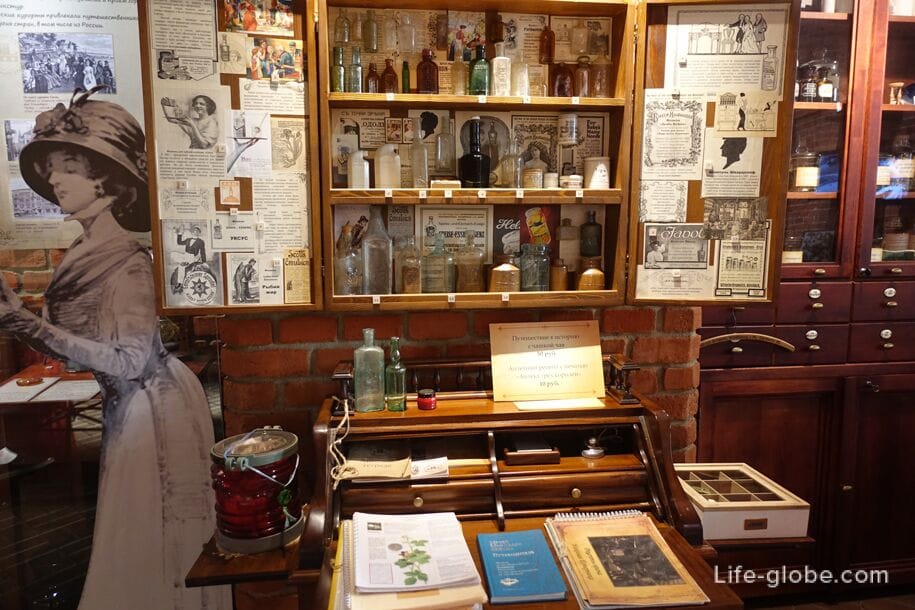
Also in the first hall of the museum there is a cash register, the German Empire, 1908. Model "National Cash Register Model 672". Factory production under license.
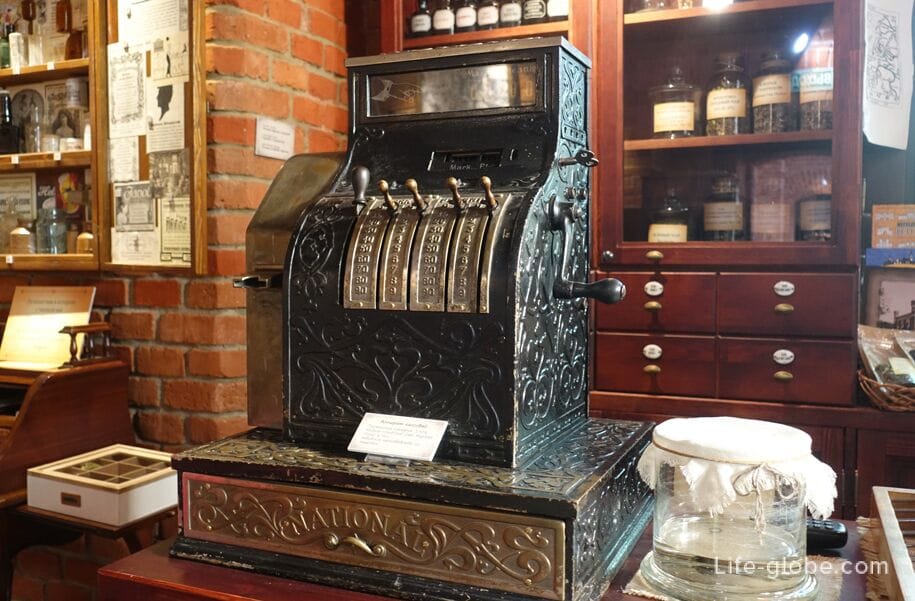
Telephone, Germany, the beginning of the 20th century.
Currently, you can hear one of the Pharmacy stories on this device, you just have to pick up the phone and press the button with the name that interests you: pharmacy - warehouse; crocodile in the pharmacy; medicines made of precious stones; 46 recipes using amber; crush or grind?; gild the pill; gasoline in the pharmacy; pharmacists sung by the poet, etc.
Simultaneous listening by two subscribers using two handsets is possible.
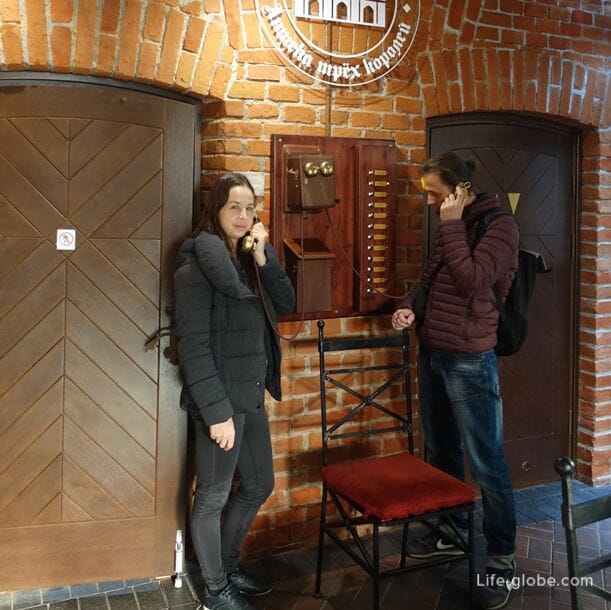
Not far from the Royal Gate, at the address: Frunze Street 51-57, there is a "Kreuz pharmacy" - the main pharmacy of Konigsberg.
Today the building has been reconstructed and has a bright mixed facade. Learn more about Kreuz Pharmacy...
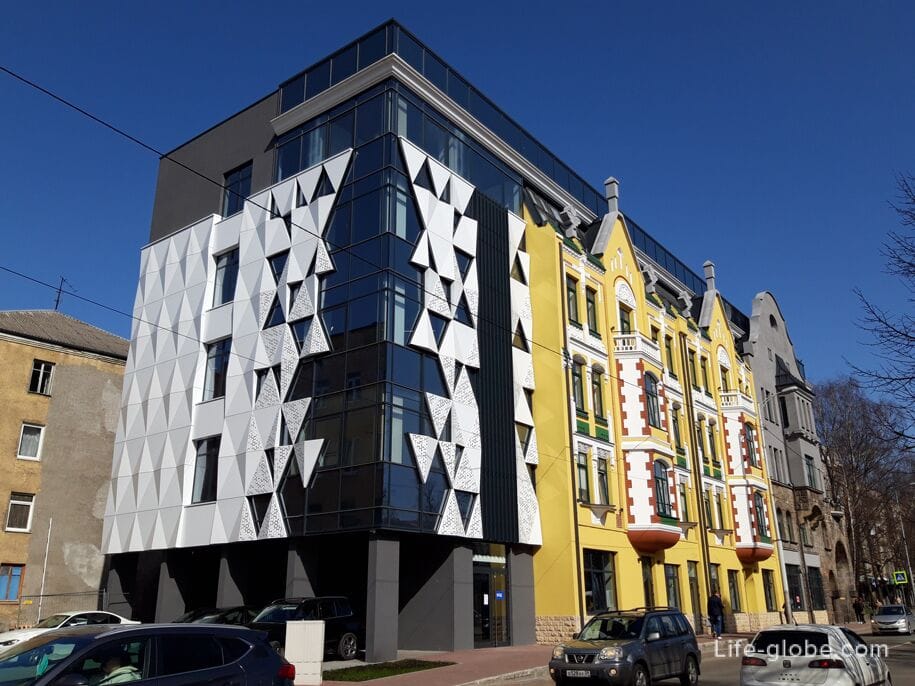
The second or central one is the largest hall in the museum. Previously, when using the Royal Gate for its intended purpose, there was a passage here.
The exposition in the second hall - "The Great Embassy", tells about the historical ties of this land with western and eastern countries, about the history of the Great Embassy of Peter I, about the partner cities of Kaliningrad, about the embassies and consulates of Konigsberg - Kaliningrad.


Yacht Model

Model of the Dutch frigate "Saint George"

Bust of Catherine the Second
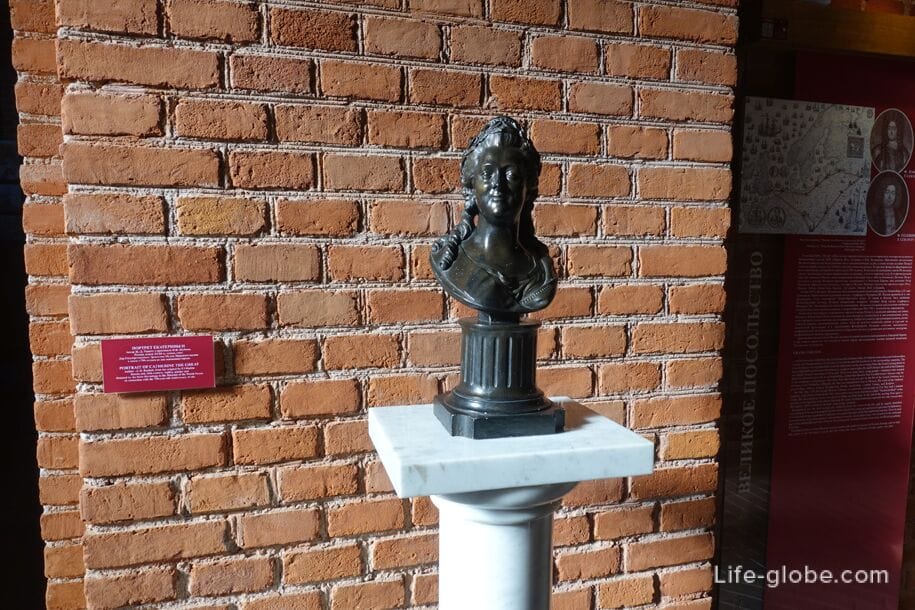
Bust of Peter I
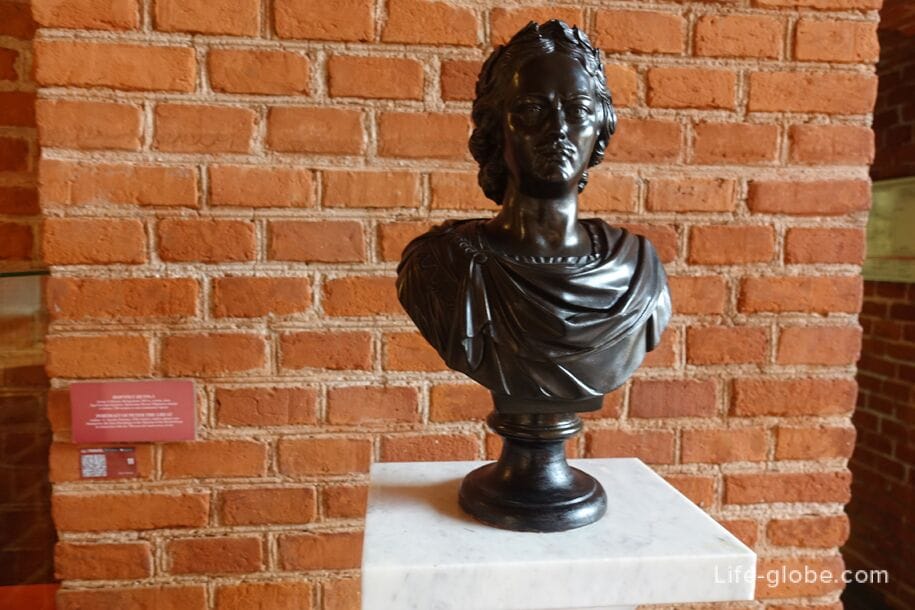
Painting "Arrival of Peter I in Konigsberg"
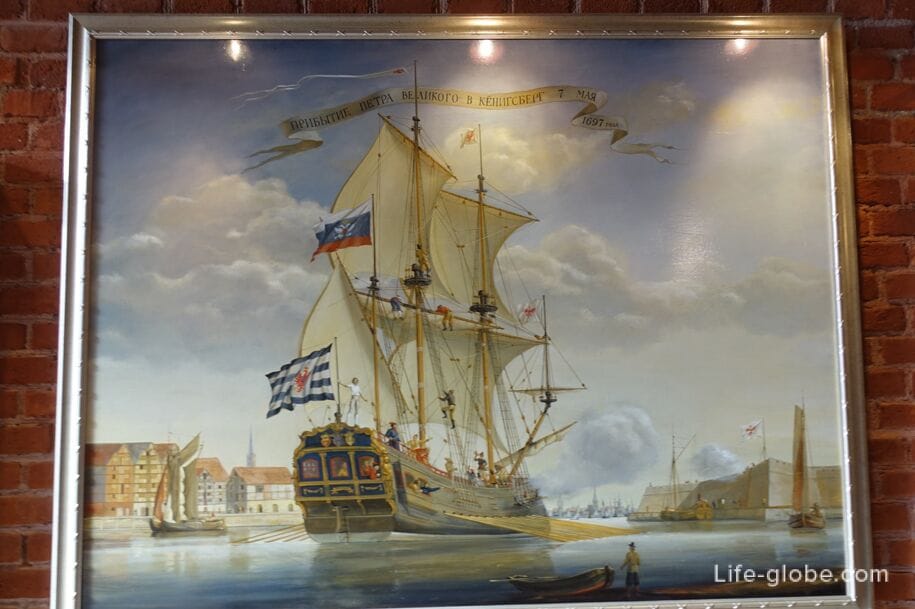
Ship's cannon "Shuvalov unicorn"

Prussian Queen Louise, a porcelain pair with a relief profile portrait of Louise, a cup with a portrait of the Prussian king Frederick William III and a plate with a picture of a meeting at the town hall.
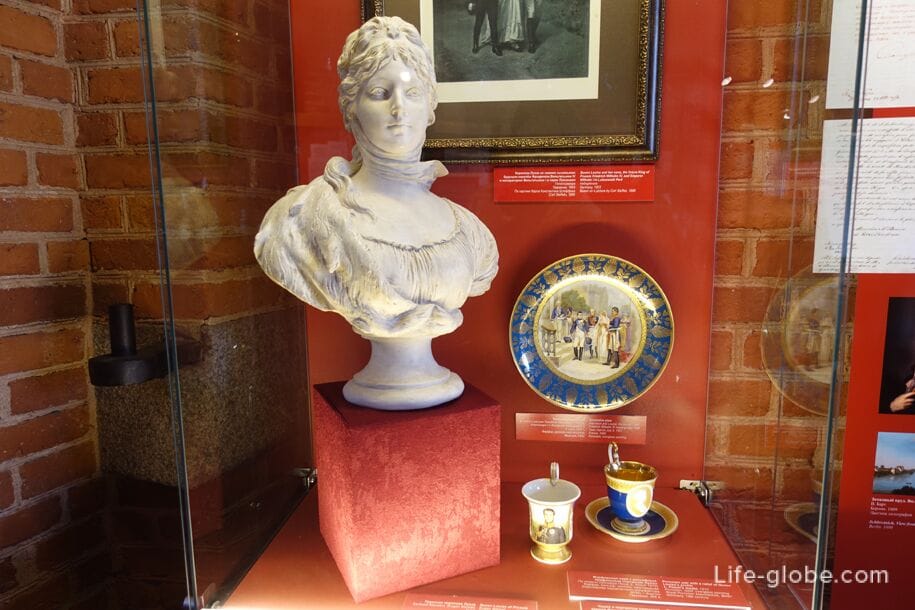
Artist's desk
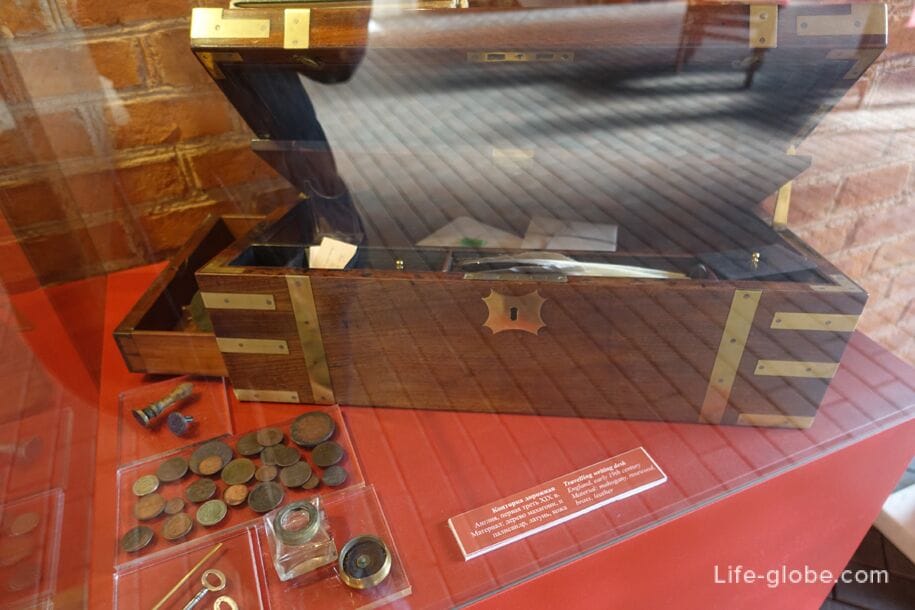
The exhibition "Under the Russian Crown" introduces the pages of the history of East Prussia as part of the Russian Empire. Copies of documents, fragments of engravings, diagrams and maps, historical references are put together in a story about distant times, about interesting people and their lives. Here you can see sculptural portraits of Russian governors of East Prussia.
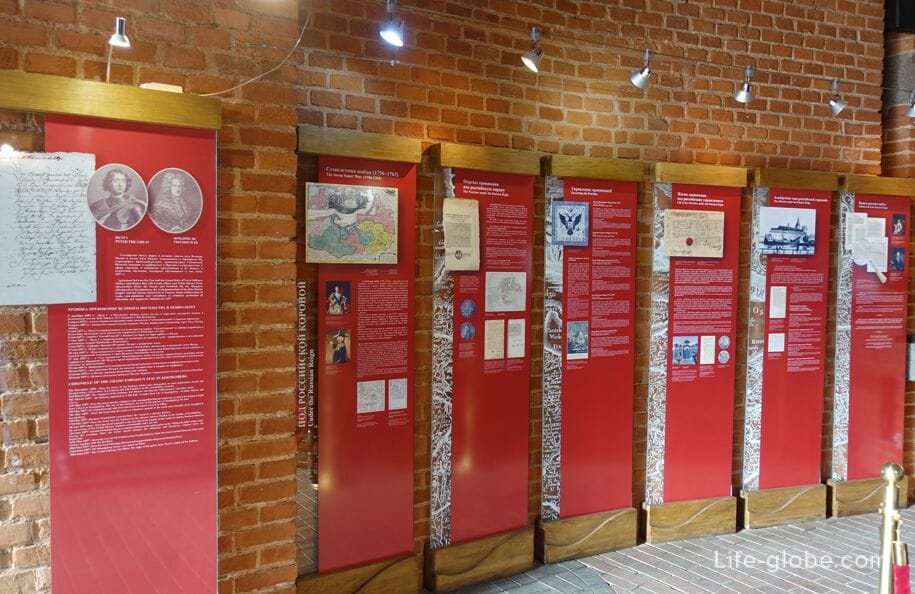
Famous Russians in Konigsberg

The exposition of the third hall, called "The History of the fortress city", tells about the old city, about the history of its origin, fortifications in general and the city gates in particular, about the crowned historical details - the "fathers of Konigsberg".

Bricks from the ruins of the Royal Castle of Konigsberg of the 18th-20th century. Castles of the 10th-20th centuries, Germany, Russia. Cart wheel, the first quarter of the 20th century, Germany.
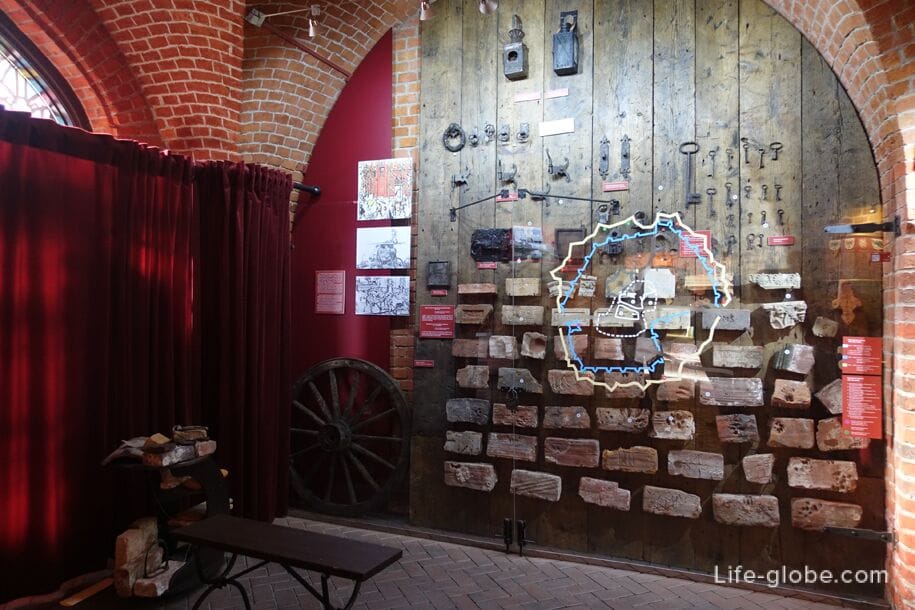
Back in the 1990s, while studying the history of the Royal Castle, the owners of the collections drew attention to strange, sometimes unexpected, prints on the bricks: animal tracks, brands of craftsmen, children's footprints. These images served as motives for legends, remaining unique evidences of the history of the region.
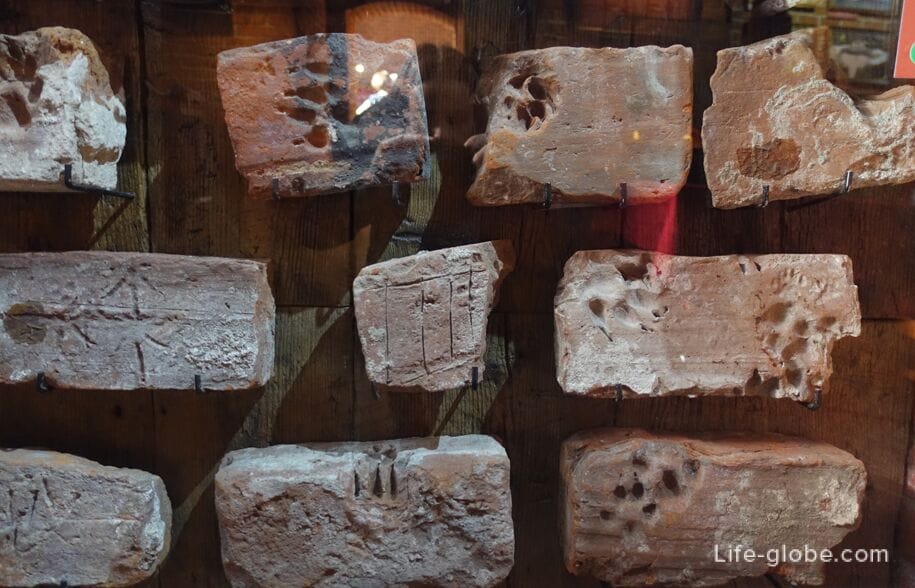

Bricks with stamps, tiles, facade decoration detail, nails for various purposes, horseshoe, stirrup.
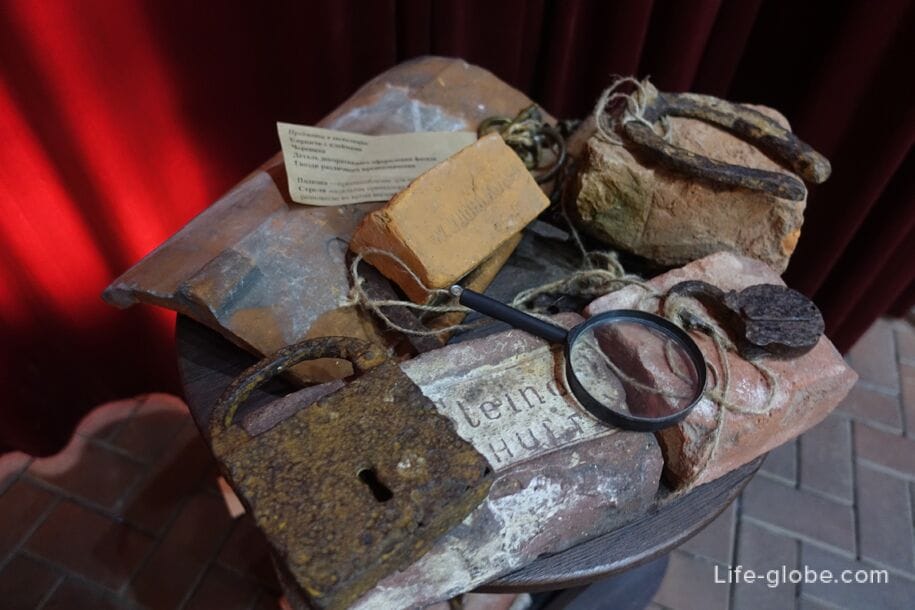
The exhibition "Time of the Knights". Spiritual and knightly orders in medieval Europe were originally created to promote the interests of Catholic countries in the Middle East and protect pilgrims in the Holy Land. The most famous were the Hospitallers, Templars, Johannites, Livonian and Teutonic (German) orders. Over time, the knights' attention turned to the pagan peoples of the southeastern Baltic, who could not be Christianized. So, in 1222-1223, the Pope created a crusade against the Prussians, which was not crowned with much success and caused new pagan raids on Poland. To protect its borders, the Polish King Konrad Mazowiecki invited the Teutonic Order.
The Teutonic Brotherhood of the Virgin Mary in Jerusalem was founded in 1191. The knights failed to gain a foothold in the Middle East, and they were forced to move to Europe. At the invitation of the Hungarian king, the order settled in Transylvania to protect itself from the Polovtsians. From there, the knights were expelled due to the discontent of the local population.
When Poland turned to the order for help, the knights-monks, taking advantage of the situation, conquered their territory with fire and sword to create a new state on the lands of the Prussians. Castles were built on the former pagan settlements: Elbing (1234, now the city of Elblong, Poland), Balga (1239, now the settlement of Veseloe, Kaliningrad region), Konigsberg (1255, now Kaliningrad), etc.
The order flourished in the 14th century. After the defeat of the allied forces of the Lithuanians, Poles and Russians at Grunwald (1411), the greatness of the brotherhood of knights began to decline. The Order lost land, became a vassal of Poland, and trading cities, crowding knightly power, gained increasing influence in the state. So the era of the Middle Ages was passing into the past, and with it the power of spiritual and knightly orders.
Currently, the headquarters of the Teutonic Order is located in Vienna.
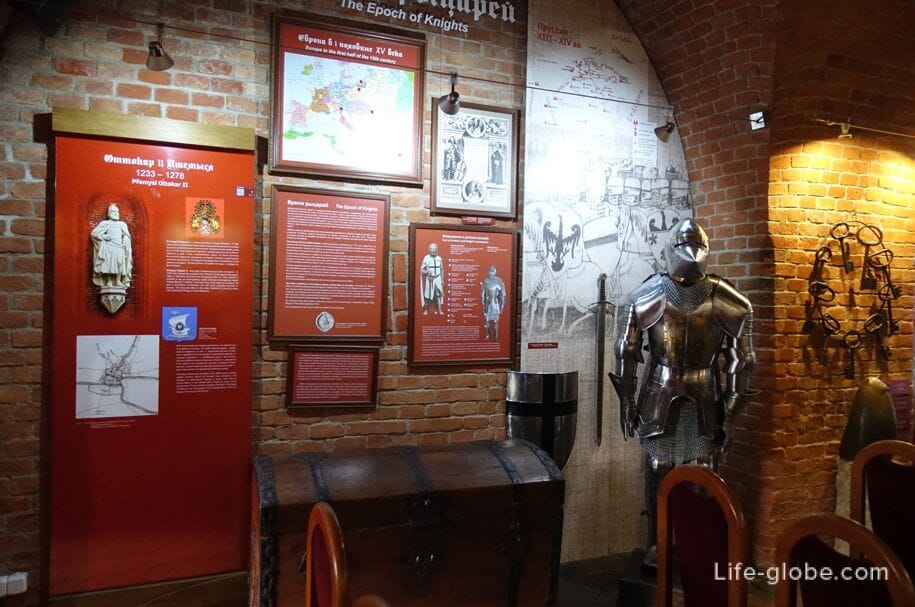
Armor of the Knights of the Teutonic Order
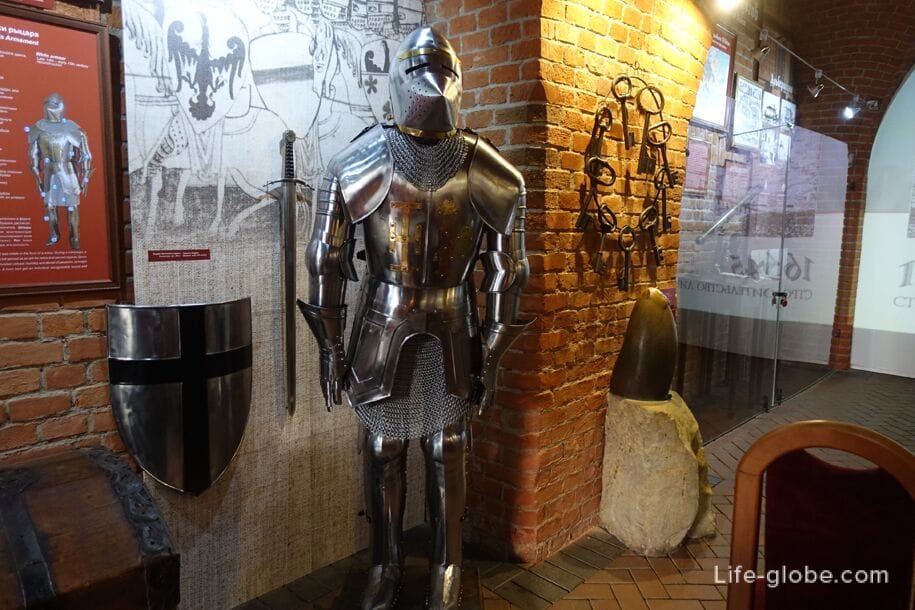
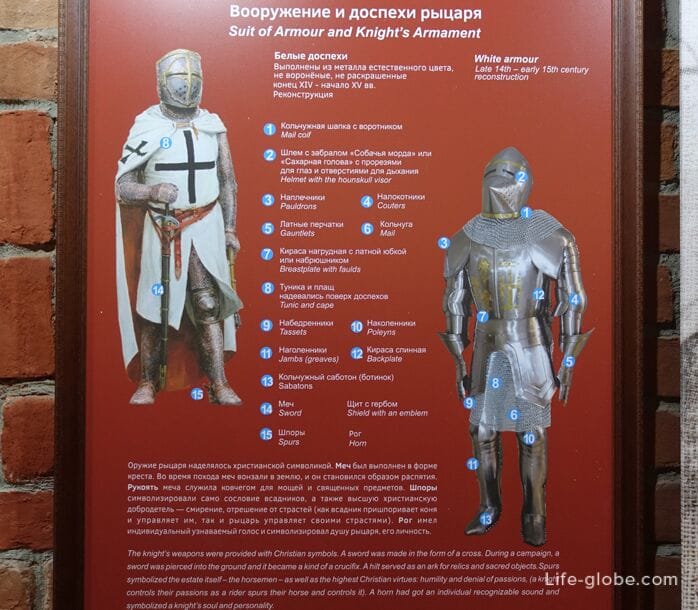
Old chest (original)

The famous bronze sculpture "Prussian Cat" is also located in the third hall of the museum. The sculpture of a cat is installed on a block of sandstone from the upper part of the mashikuli Royal Gate.
This sculpture is famous, first of all, for the fact that, according to the assurances of the museum keepers, it fulfills wishes. They say that wishes are fulfilled within a year from the moment of making a wish, as well as the fact that some tourists come to Kaliningrad again and again and, as for the first time, go to the museum to make another wish, with exclamations: "Well, they made a wish and forgot, they made such an incredible wish, and take it, and be fulfilled, so they came again!".
Wishes need to be made not abstract, the cat does not understand such, for example, "So that everyone is happy and healthy," but precisely defined, we say: "So that I (so-and-so) become a global entrepreneur and my business (so-and-so) brings one hundred million euros of net profit per month." While making a wish, the fat man needs to be stroked on the top of his head or scratched behind his ear))
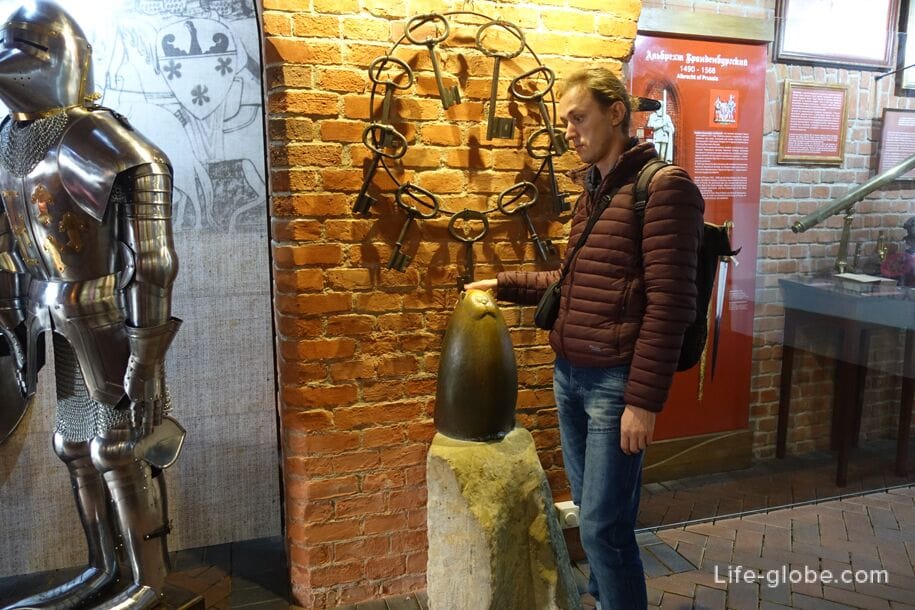
Symbolic keys to the city gates of Konigsberg. There are 9 keys, according to the number of gates, apparently the gates of the Eastern Railway are not taken into account.
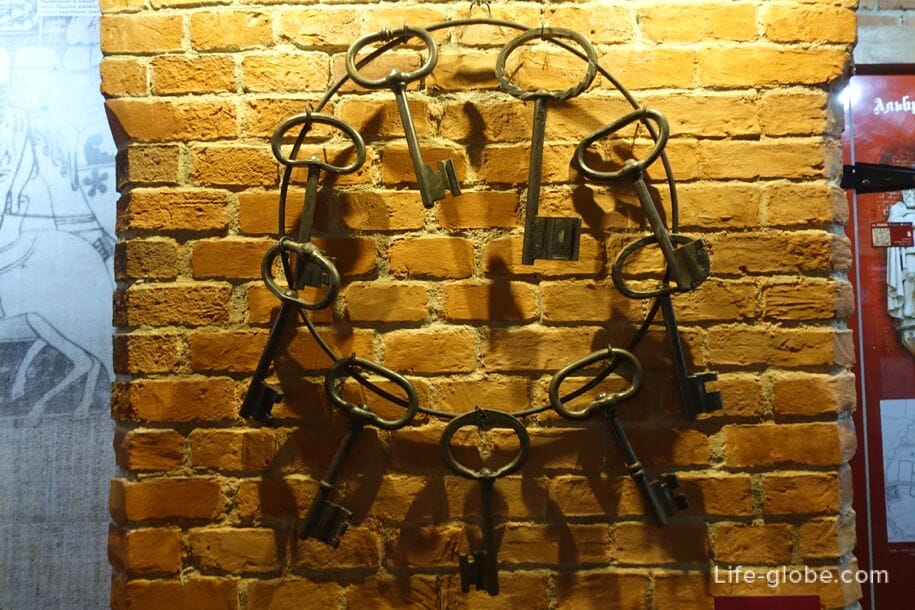
The tree of the ruling dynasties - the Hohenzollerns-Romanovs (family ties of Russia and Poland).
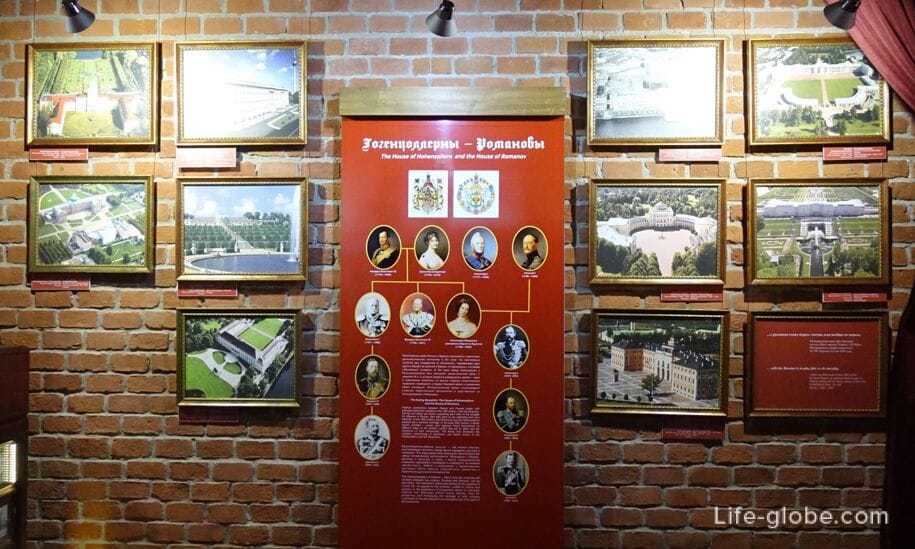
There is also a paradise in which you can see the views of Konigsberg in 3D format, it looks very impressive, we have reviewed two circles. Some semblance of these boxes, but simpler ones, were put on squares and in crowded places of the city, then it was one of the favorite amusements of citizens.

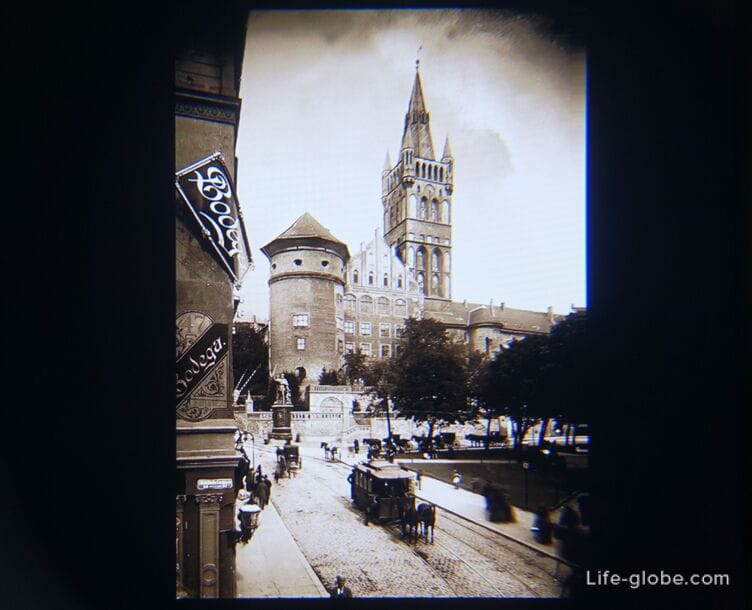
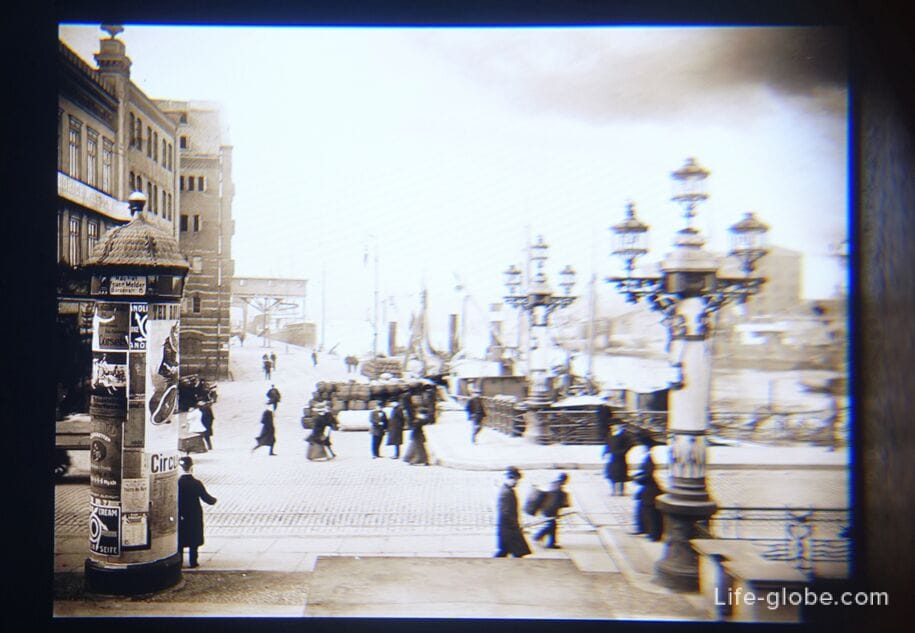
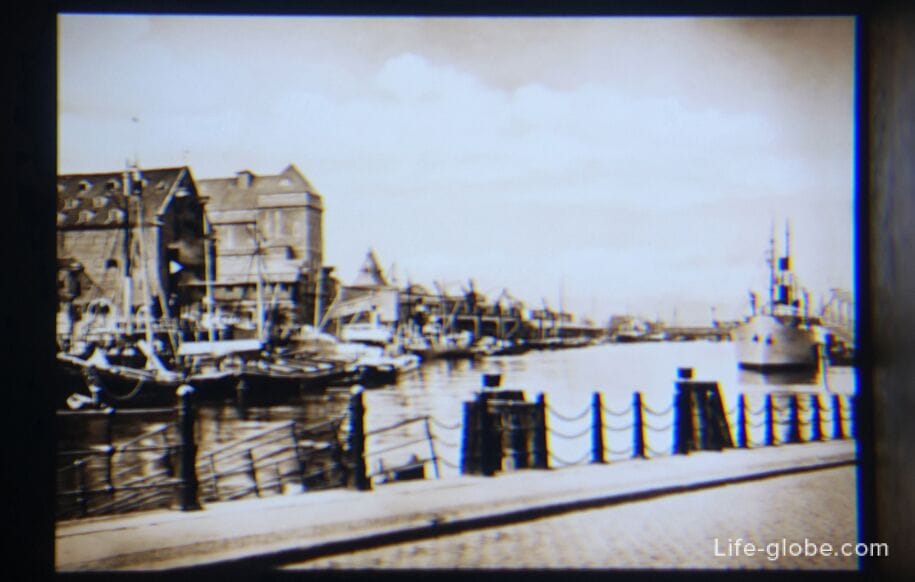

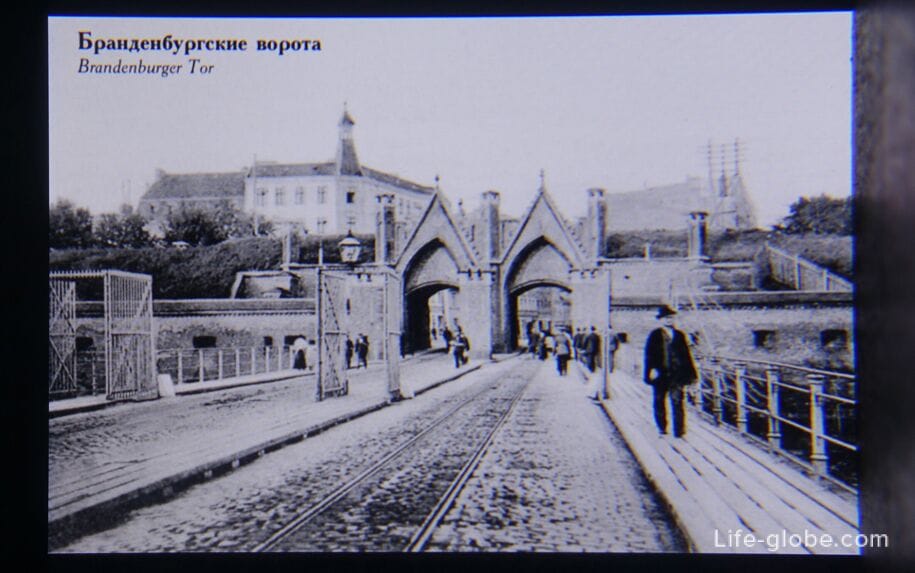
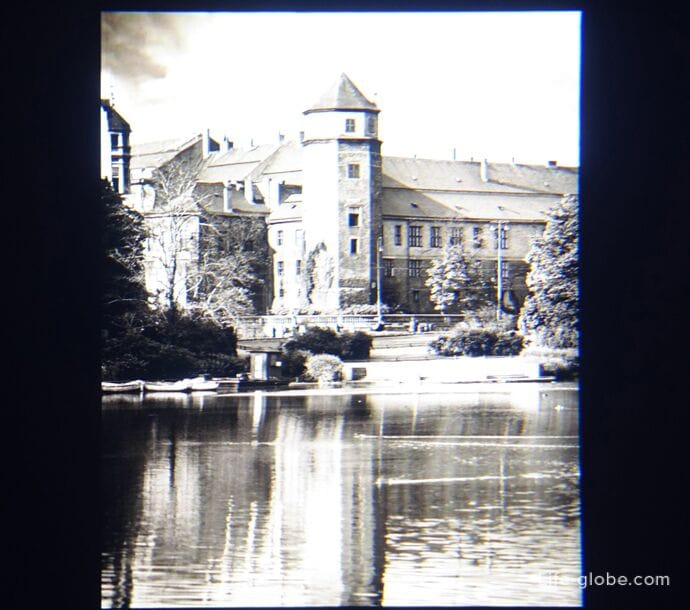
The Royal Gate in miniature

Gramophone "His Master's Voice", Great Britain, the first third of the 20th century

Showcase dedicated to the royal time

Royal amber and porcelain figurine: King Frederick II of Prussia with his beloved dogs Alkmen and Coward.

Drawings by Friedrich Wilhelm III (copies), a writing instrument (Western Europe, late 19th century) and Friedrich August Stuhler.

Frederick William IV

The Albertina showcase. Albertina is a university in Konigsberg.
"... in our city of Koenigsberg, we are opening a university so that all noble arts and languages are taught consistently and in full… We hope that this university of ours will benefit many peoples who border with Prussia, both in the East and in the West...".
From Duke Albrecht's speech at the opening of the University
The charter of the foundation of the University of Koenigsberg is dated July 20, 1544. The foundation of the university followed on August 17, 1544. The first building was located on the eastern shore of Cathedral Island. In 1569, Albrecht ordered the construction of a new building along the northern shore of Cathedral Island (now Kant Island). The first rector of the university was Georg Sabinus. Other famous rectors include Professor of Poetry Simon Dach (1656), Immanuel Kant (1788), Crown Prince Friedrich Wilhelm (1803).
The name "Albertina" appeared at the university in 1644, when its 100th anniversary was celebrated. On August 31, 1844, King Frederick William IV laid the foundation of the university on the territory of the Royal Garden. The sketch of the building in the spirit of the Italian Renaissance was developed by the Berlin architect F.A. Stuhler. Construction started in 1856 and ended in 1861. The old "Albertinum" in 1875 was bought by the city for a library.

A book monument with the seal of the University of Koenigsberg, the headdress of the student Albertina (1900-1910, velvet, metal thread, lacquered cardboard), badges certifying belonging to the University "Albertina" (early 20th century, metal), a household candlestick, a glass inkwell with a pen, an envelope with stamps "400 years of the University of Koenigsberg", observation devices: microscopes and a telescope.

Address of the historical and cultural center "Great Embassy": the museum is located in the Royal Gate, at the intersection of Frunze Street/Yuri Gagarin and the Lithuanian Shaft in Kaliningrad, at 112 Frunze Street, Kaliningrad.
Entrance from the Lithuanian Shaft.
Exhibitions and excursions at the Great Embassy Historical and Cultural Center: receptions, wedding ceremonies, birthday celebrations, musical events and evenings are held in the halls of the museum.
You can find out the cost, opening hours of the museum, as well as about excursions and other events held in the museum, both at the ticket office located directly in the museum and on the official website.
The official website of the historical and cultural center "The Great Embassy": the museum in the Royal Gate is a branch of the Museum of the World Ocean, the website is world-ocean